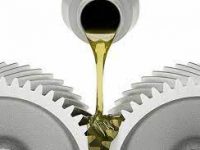Preventive maintenance usually involves changing fluids and filters based on time or operating hours, rather than actual condition. It’s not the best strategy for all equipment, but in some cases such as low cost, non-critical, easy-to-replace equipment it does make sense. While preventive maintenance usually doesn’t involve oil analysis, in some situations, such as assessing the condition of new oil, it does.
Generally speaking though, preventive maintenance is an antiquated way of caring for machinery.
Eurofins TestOil Reliability Concierge Program Manager David Gawelek says, “With preventative maintenance, you are carrying out regular, planned, cyclical tasks to maintain equipment and prevent failure.” With preventive maintenance, there are no measurements directly impacting the decision.
Preventive maintenance is commonly referred to as interval or time-based. Parts are replaced and maintenance is performed whether the asset needs it or not. Timing is based on the shortest predictable interval before failure. Because of this, most maintenance is performed too frequently.
Advantages include:
- Easier forecasting of parts and labor costs
- Better coordination between maintenance and production.
Disadvantages include:
- Higher parts and maintenance costs
- Greater waste in replacing parts with remaining useful life
- Increased risk of early failure with new parts and work practices
- Does not eliminate failures completely.
Preventive maintenance is common across industries, but not always executed correctly. According to IBM, as much as 50 percent of the cost of preventive maintenance is wasted because companies focus on maintenance tasks that do not prevent failure. [1]
Elements of successful preventive maintenance strategies include:
- Setting Clear Parameters: There are specific instructions and tasks for completion.
- A Sensible Timeframe: Performing preventive maintenance too often can lead to wasted time and resources; performing it not often enough can lead to machinery failure.
- A System for Documenting All Completed Work: A great option is a computerized maintenance management system (CMMS) that provides detailed analysis and reports.
A preventive maintenance program has the potential to reduce breakdowns, improve efficiency, lengthen equipment lifespan and minimize downtime for some types of machinery—which a thorough site audit can identify. While it will always be better than waiting for a reduction in machinery performance before taking action (a reactive approach), in most cases, preventative maintenance just isn’t the best option for maintaining machinery.
For more information on working with Eurofins TestOil for oil analysis and training visit www.testoil.com. Contact: 216-251-2510; sales@testoil.com.
With more than 30 years of experience in the oil analysis industry, Eurofins TestOil, focuses exclusively on assisting industrial facilities with reducing maintenance costs and avoiding unexpected downtime through oil analysis program implementation. As industry experts in diagnosing oil-related issues in equipment such as turbines, hydraulics, gearboxes, pumps, compressors and diesel generators, Eurofins TestOil provides customers with a guarantee of same-day turnaround on all routine testing. Eurofins TestOil PRO certified lubrication professionals educate the industry on oil analysis through public and private onsite training. These highly experienced professionals provide a variety of onsite services; from collecting oil samples to conducting failure analyses to writing work orders. For more information on partnering with Eurofins TestOil on oil analysis programs or training opportunities visit https://testoil.com. Contact: Michael Barrett 216-251-2510; sales@testoil.com.
[1] https://www.ibm.com/blogs/internet-of-things/as-much-as-half-of-every-dollar-you-spend-on-preventive-maintenance-is-wasted/


